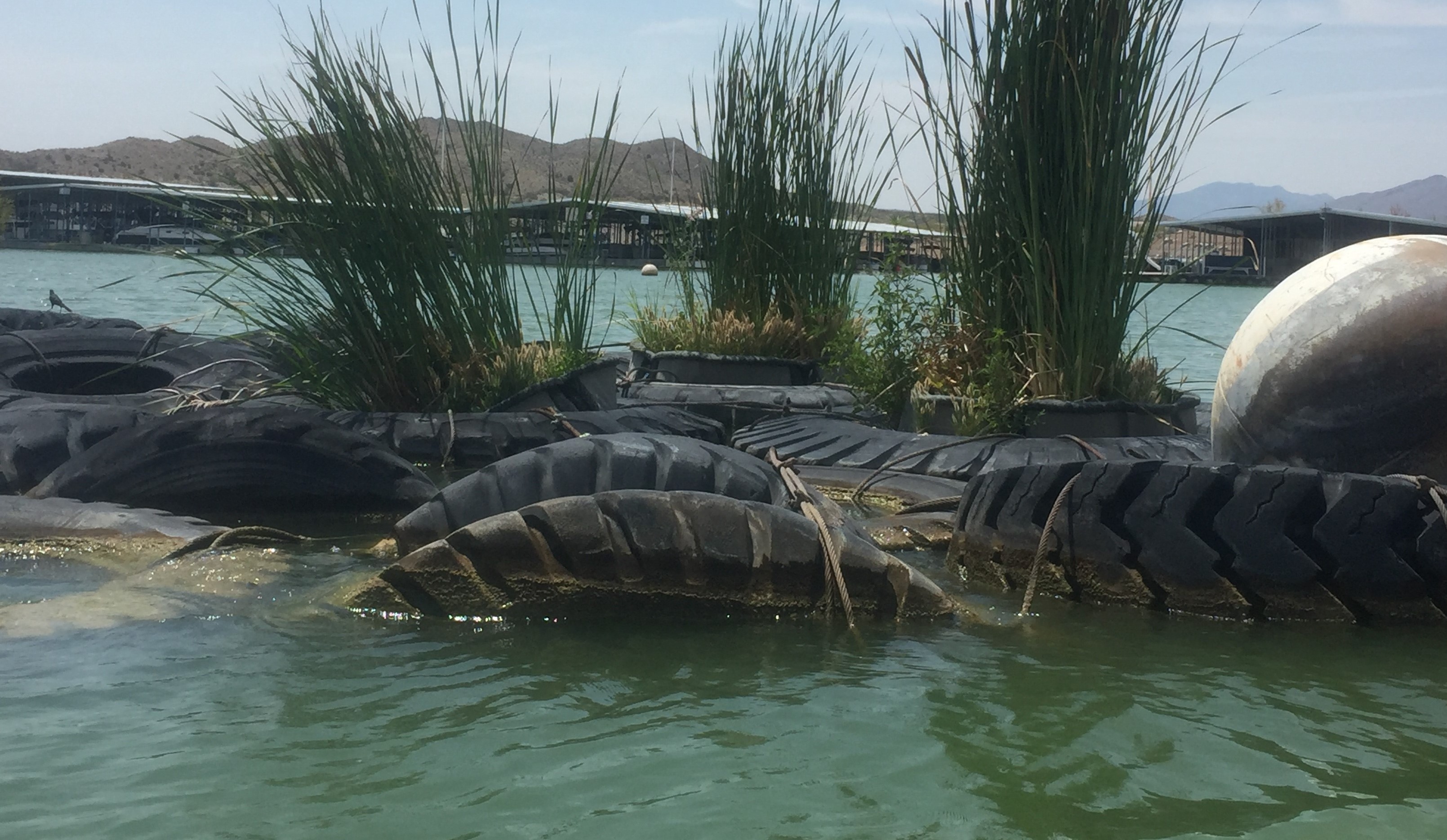
Purpose of the project: Elephant Butte Reservoir is a 100-year old irrigation reservoir on the Rio Grande River, one of the top ten endangered rivers in the world. The primary purpose of the reservoir is to retain and release water for agricultural and municipal uses. As a result, irrigation releases managed by the Bureau of Reclamation (BOR) cause annual lake level fluctuations on the range of 30 vertical feet, destroying all terrestrial vegetation, eroding soils and preventing the establishment of aquatic vegetation. The timing of the releases often disrupts spawning of littoral fish species. Siltation over the life span of the reservoir has degraded what shallow-water habitat that existed in the upper reaches of the reservoir. Recent wildfires in the watershed have further exacerbated the siltation issues.
Purpose of the project:
Elephant Butte Reservoir is a 100-year old irrigation reservoir on the Rio Grande River, one of the top ten endangered rivers in the world. The primary purpose of the reservoir is to retain and release water for agricultural and municipal uses. As a result, irrigation releases managed by the Bureau of Reclamation (BOR) cause annual lake level fluctuations on the range of 30 vertical feet, destroying all terrestrial vegetation, eroding soils and preventing the establishment of aquatic vegetation. The timing of the releases often disrupts spawning of littoral fish species. Siltation over the life span of the reservoir has degraded what shallow-water habitat that existed in the upper reaches of the reservoir. Recent wildfires in the watershed have further exacerbated the siltation issues. Furthermore, Elephant Butte is in the arid southwest (southern New Mexico) and is subjected to frequent and prolonged drought periods. It would be hard to imagine more hostile conditions under which to restore fish habitat and recreate the once vibrant fishery.
The New Mexico B.A.S.S. Nation (NMBN) has received two grants from the Reservoir Fisheries Habitat Partnership: 1) $20,000 in FY2014 and 2) $25,000 in FY2018. The objectives of the projects are to restore littoral fish habitat using artificial and natural structures and to establish native vegetation in the “drawdown” zone of the reservoir. To do so under these challenging conditions has required developing innovative methods and testing of Best Management Practices for reservoir habitat restoration in western irrigation impoundments. The initial years of the project focused on “traditional” structure addition techniques such as adding Christmas trees discarded by local communities and locally available juniper trees, concrete reef balls, and rock/pallet structures. Floating islands were placed along marinas and selected shorelines and attempts were made to establish native vegetation through the distribution of “seed balls.” The current phase is focused on implementing a long-term vegetation plan and using longer-lasting juniper cuttings and artificial structures. The vegetation plan includes several innovative methods to introduce native seeds, seedlings and pole plantings to the moist shoreline as it recedes. We are currently focusing on the Gooding willow (Salix goodingii). During field exploration and observation, the Ruidoso High School science class confirmed that the Gooding willow can survive being submerged for several months in water as deep as 20 feet. One plant was estimated to be over four years old and had survived three extended submersions, beavers and propeller damage. Other isolated younger plants were observed in several coves. Further evaluation found that the Gooding willow was able to compete with invasive tamarisk in the far north reaches of the lake where it provides critical habitat for the endangered southwestern willow flycatcher. Initial plantings in 2016 have been successful with over 80% survival. Restoration of these native plants will eventually create dense stands that would provide shoreline wildlife habitat during the summer and fall and fish habitat during the winter and spring.
Human Interest/Community Benefit:
This project transitions to more permanent artificial and juniper structures and increases the amount of native shoreline vegetation that will support local wildlife including improved habitat for fish, endangered willow flycatchers, and desert wildlife that have suffered from the recent drought. The project is in step with the New Mexico State Parks initiative to include more year-round activities including hunting and establishing an off-road vehicle park. The State Park has the highest number of visitors of any park in the state. The reservoir is the major water destination for people from Albuquerque, Las Cruces, Socorro and El Paso, Texas with combined populations of almost 2 million people. On July 4th weekend, the area becomes the fourth largest populated area in New Mexico with over 100,000 visits to the park. The local economy relies heavily on tourism and recreation. The decrease in water levels has had a serious impact on businesses and property values. This project would attempt to mitigate the impact of water fluctuations on the fishery.
The Elephant Butte Adapt-a-Cove project strives to involve all park visitors and will enhance both fishing and hunting opportunities. The project also will develop and communicate best management practices and innovations that could be used worldwide to make more sustainable and productive use of reservoir shorelines that are exposed either due to drought or annual fluctuations.
Project Timeline:
Phase I: 9/2015-10/2016
Phase II: 5/2019-12/2020
Partners: New Mexico B.A.S.S. Nation, Bureau of Reclamation, New Mexico Game and Fish, New Mexico State Parks, New Mexico State Chapter of AFS, Kemp Foundation, Albuquerque Hawg Hunters, Messilla Valley Bassmasters, Cedar Cove Bass Club, Riudoso High School, Marina Del Sur, Butte General Store and Marina, Zia Kayaks, Thomas Farms, Steve Bell Construction.
